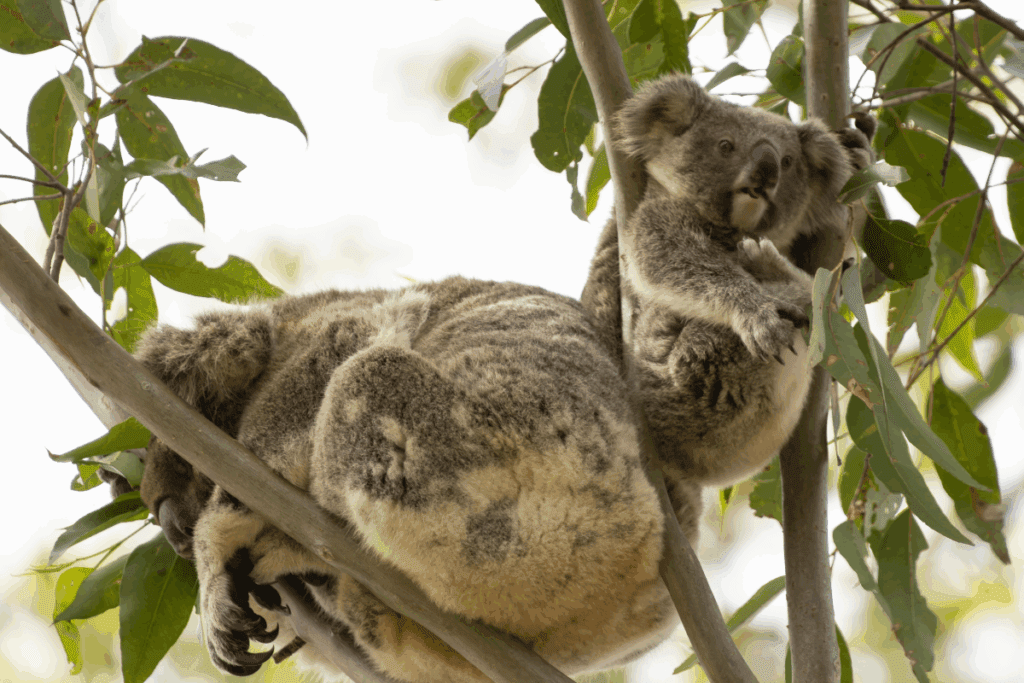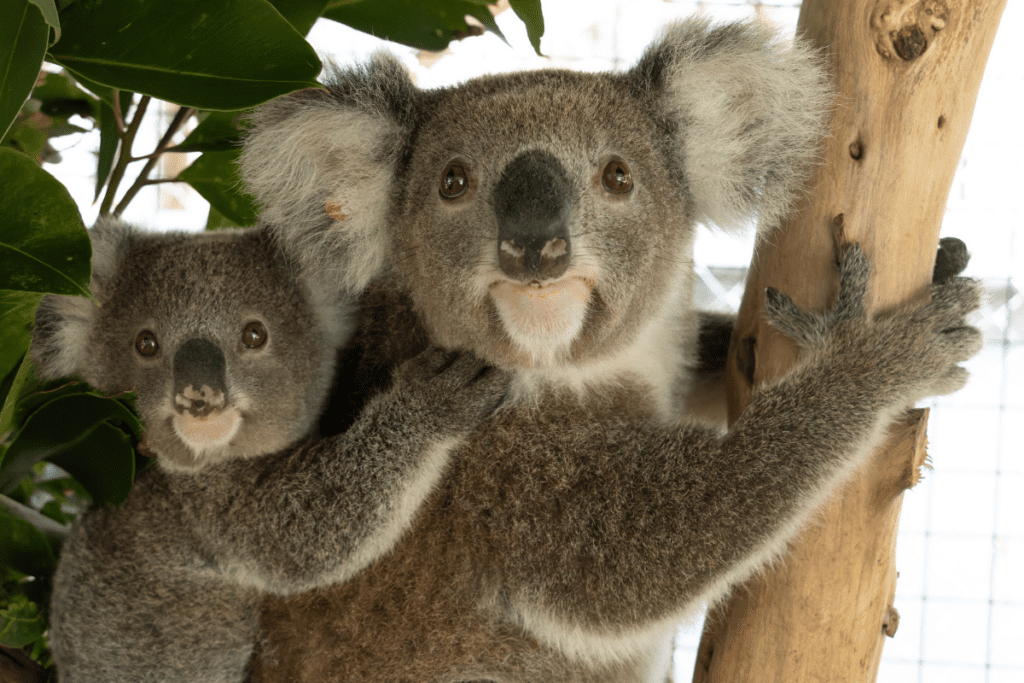National Tree Day – Australia’s largest community tree-planting and nature-care event from Planet Ark takes place on Sunday 27th July. It is a call to action for all Australians to get their hands dirty and give back to the community! We take this opportunity to raise awareness and mobilise action to protect and enhance koala habitat.
Koalas in the Northern Rivers
The Northern Rivers is a lush, ecologically diverse region in northeastern New South Wales, situated on the lands of the Gumbaynggirr, Yaegl, and Bundjalung people. It stretches from the Clarence Valley in the south, up to the Tweed Ranges on the Queensland border, and west to Kyogle and the Great Dividing Range.
This spectacular part of the world is home to significant koala populations and is, in fact, one of the most important regions for koalas in Australia.
Despite mounting pressures, it still supports some of the largest remaining koala populations in NSW, particularly in:
- Lismore (a declared Koala Management Area),
- Casino, often referred to as the “Koala Capital of the World”, and
- The coastal areas of East Ballina and Byron, which support small but important populations.
Koalas in this region are genetically distinct and diverse – an essential factor in the long-term survival of the species. This genetic resilience may offer better adaptation to diseases like Chlamydia and climate stressors.
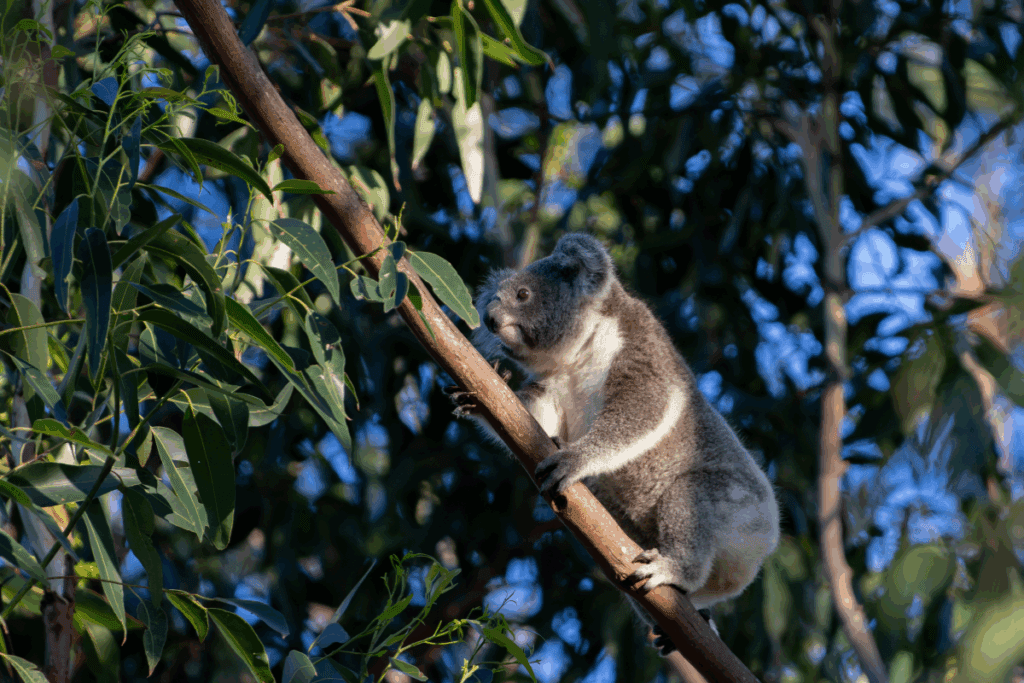
Interconnected Threats
Despite its ecological significance, the Northern Rivers’ koalas face serious, interconnected threats, each compounding the effects of the others:
- Habitat loss due to urban development, agriculture, and infrastructure expansion
- Vehicle strikes and dog attacks, especially during breeding season
- Bushfires and floods, increasingly common due to climate change
- Disease, particularly Chlamydia, which causes blindness, infertility, and death
- Habitat fragmentation, making it harder for koalas to find mates and food
Koala Habitat Is Vanishing
Every cleared block, every fragmented corridor, and every felled feed tree makes survival harder for a species already pushed to the brink.
Koalas spend up to ninety per cent of their lives in trees, and their survival depends on the connectivity of forested landscapes. Yet, habitat destruction has left many koalas isolated, starving, and vulnerable – especially during breeding season, when they move in search of food and mates.
Without immediate action to restore and protect habitat, including the planting of suitable eucalypt species, we risk losing koalas from regions where they once thrived.
A Regional, Collaborative Approach
We know that saving koalas means working together – across councils, communities, and conservation groups – on a regional scale. Habitat protection is at the heart of our mission, because without habitat, there are no koalas.
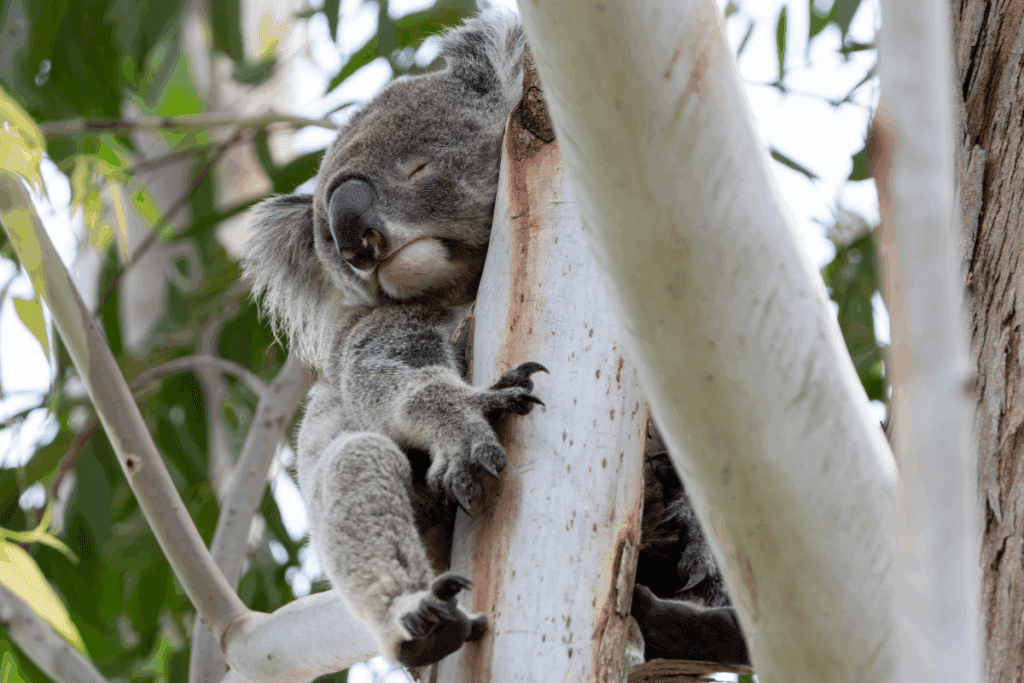
What We Do to Protect Koala Habitat
Native Tree Planting
Friends of the Koala has planted tens of thousands of koala food and habitat trees – primarily eucalypts – across the Northern Rivers. We also operate a Community Native Plant Nursery.
These trees help to:
- Restore degraded land
- Reconnect fragmented habitats
- Increase food availability for wild koalas
We collaborate with landholders, councils, and community groups to identify and reforest critical koala corridors. Read more about our Koala Habitat Restoration work and the Regional Koala Conservation Strategy.
Habitat Mapping and Protection
We contribute to habitat mapping projects that identify high-value koala habitat and movement corridors. This data helps:
- Advocate for better land-use planning
- Inform local conservation strategies
- Push for stricter controls in core habitat zones
Advocacy and Policy Influence
We actively campaign for stronger legal protections for koala habitat.
Our work includes:
- Making submissions on local and state plans
- Lobbying against harmful developments
- Supporting the Koala Habitat Protection State Environmental Planning Policy and other key legislation
Community Engagement
We educate landowners on the value of habitat on their properties and how they can help conserve it. Read more about our Community Engagement and Advocacy and Habitat Restoration for Landholders.
Our outreach includes:
- School programs
- Workshops
- Volunteer opportunities to build local stewardship
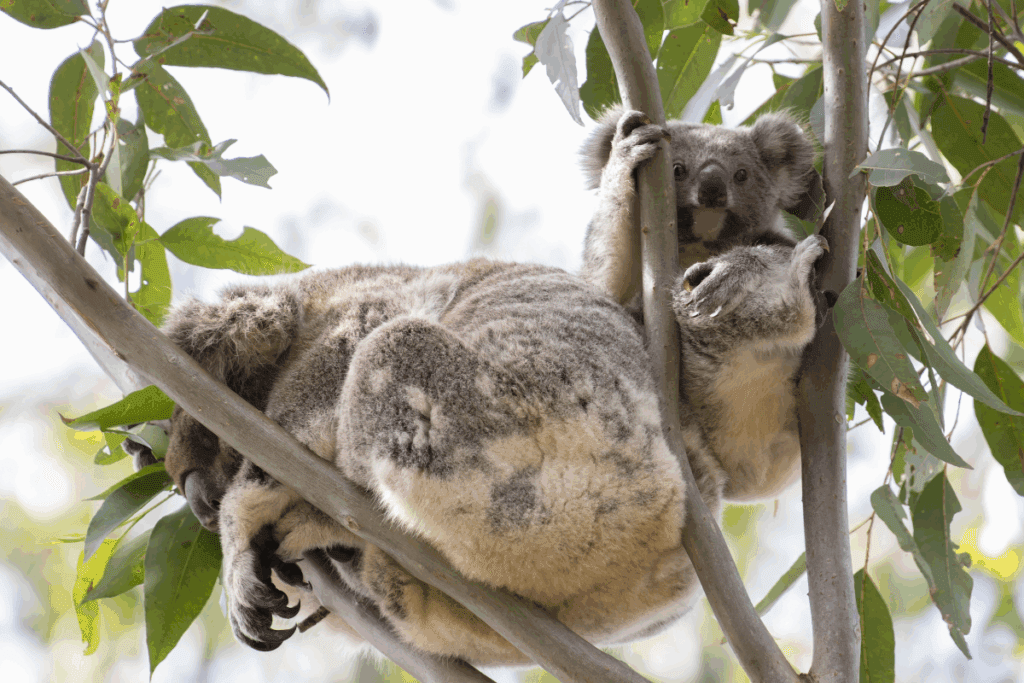
Eucalypts Koalas Rely On
Koalas in our region depend on a select group of eucalypt species for food and shelter, including:
- Tallowwood (Eucalyptus microcorys)
- Forest Red Gum (Eucalyptus tereticornis)
- Swamp Mahogany (Eucalyptus robusta)
- Grey Gum (Eucalyptus propinqua)
Secondary browse trees:
Flooded Gum (Eucalyptus grandis), Grey Gum (Eucalyptus propinqua), Blackbutt (Eucalyptus pilularis), Sydney Blue Gum (Eucalyptus saligna), Scribbly Gum (Eucalyptus signata), Grey Ironbark (Eucalyptus siderophloia), Forest Oak (Allocasuarina torulosa), Brush Box (Lophostemon confertus), Paperbark (Melaleuca quinquenervia).
Planting the right trees doesn’t just feed koalas – it helps stabilise entire ecosystems.
What you can do this National Tree Day
- Plant local eucalypt species that koalas feed on – contact your local Landcare group or check our resources to know what’s best in your area.
- Protect existing trees on your property or community spaces.
- Support wildlife corridors that reconnect fragmented habitats.
- Donate, adopt a tree or volunteer with us – we are planting, rescuing, and advocating every single day.
This National Tree Day, let’s do more than plant a tree. Let’s restore an ecosystem, feed a koala, and protect a future.
Further reading:

